Why is the Present Simple Tense so Difficult to Teach
The present simple tense is the most important tense for elementary students of English to learn. To be able to communicate intelligibly they need to master at least the basic rules. If they don´t they will struggle with many other grammar rules. Therefore it is crucial that they learn this tense.
But what does it mean to master the present simple tense? What do the students need to learn? In this post, I will list all the things you need to teach to help them with this grammar.
ADVERT:
[showmyads]
Present Simple – Form
1. SVOMPT
Many teachers and experts believe that the students will pick up the SVOMPT rule on their own. They believe that it is enough to provide the learners with enough input and this rule will take care of itself. They are wrong! It works in this way only with gifted students but not with the weaker ones. You need to teach this rule.
I have already created two posts on teaching SVOMPT. You can find the first one here and the second one here.
2. Negatives
In my experience, this rule is best mastered by using drills. Of course, we shouldn´t drill for hours on end, but 5 minutes in several consecutive lessons would be nice. For drilling I love using the following Drill table:
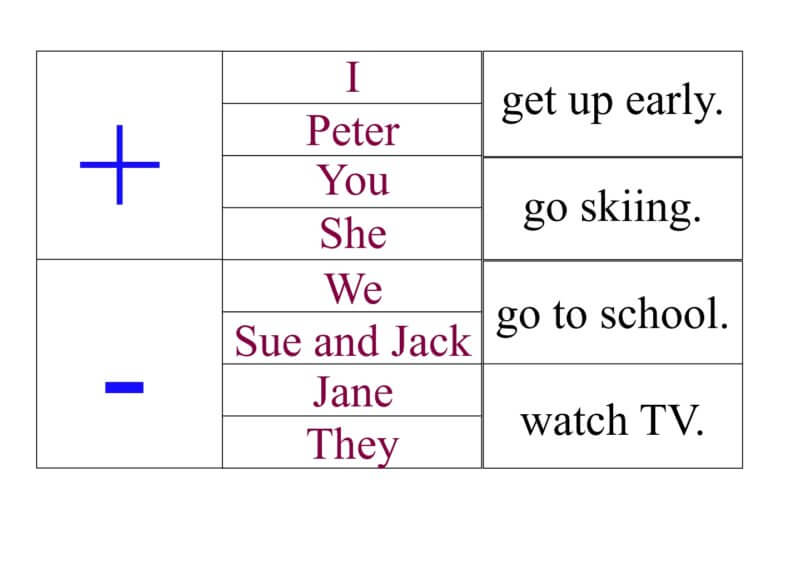
I love using the following video based on the drill table:
And to give my students a visual support to learn the negative form, I use the following graphic organiser:
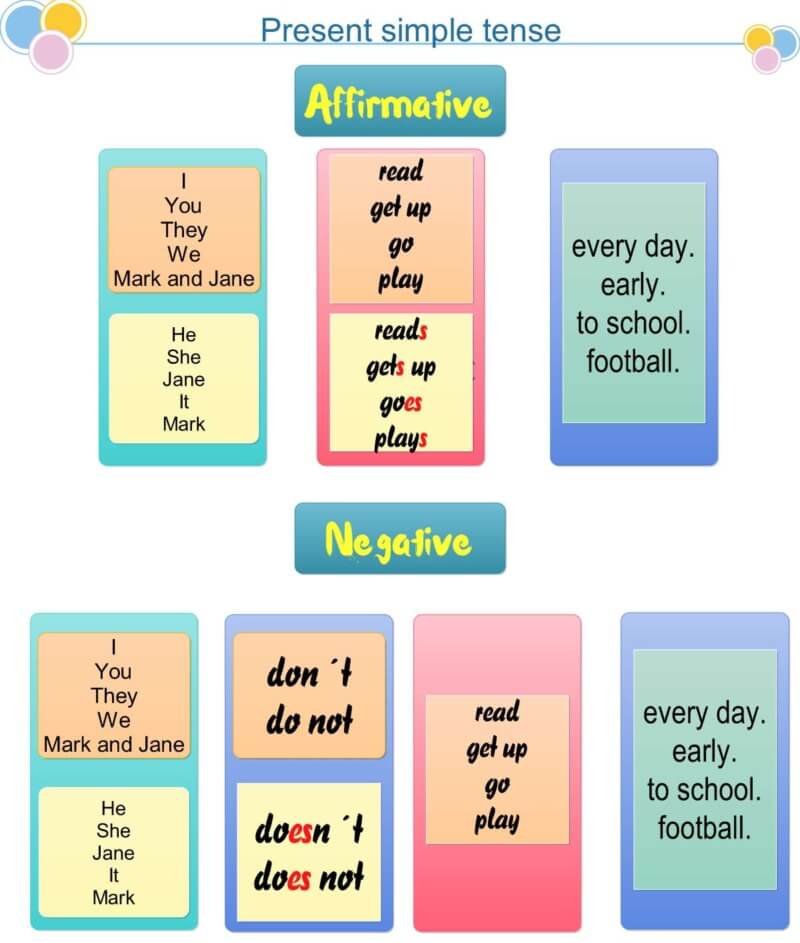
3. The -S ending
ADVERT:
[showmyads]
I personally don´t care much. If the students use English extensively, this will take care of itself in time. But there is no way to make the process any quicker. Of course, I would drill it and I would correct it but I wouldn´t worry about it too much.
Present Simple – Forming Questions
To form a question in the present simple tense, students need to use the auxiliary DO. It is not so difficult to explain. Once your students know the SVOMPT rule, just tell them to add DO at the beginning of the sentence. This “DO” informs the listener that the sentence is a question.
It isn´t difficult to understand. The problem is that in the third person singular they need to use the auxiliary DOES. To help my students I use the following drill table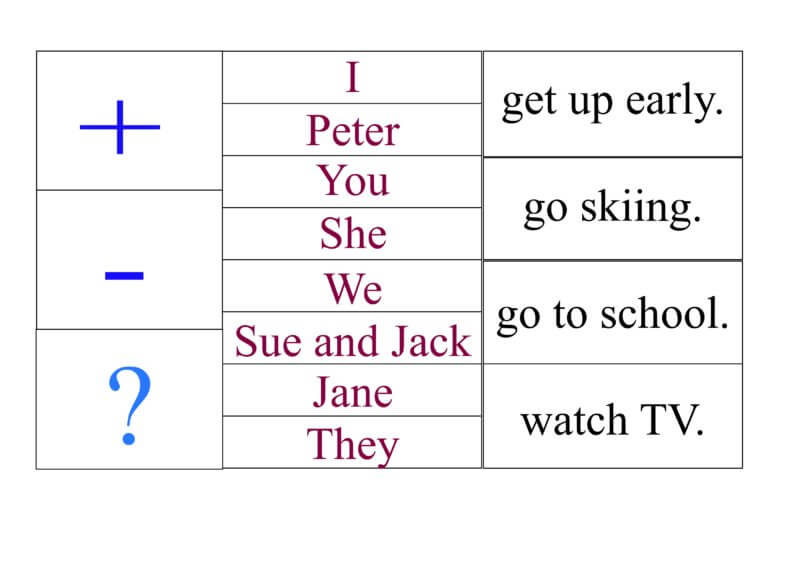
and the following graphic organiser:
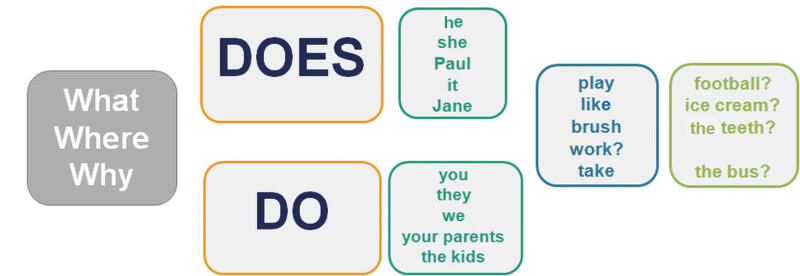
Questions Words
Or you could edit the following mind map. It contains the question words and their Czech translation.
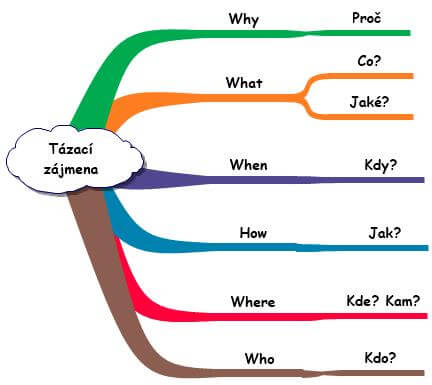
And now you might think that you are done with teaching the present simple tense. You are wrong! There are the short answers. While students can understand that they need to use the auxiliary DO again, they often fail to use the correct pronoun. To help them I have created the following post to teach just the short answers in the present simple tense.
VERBS
No, you can´t. Students need to know the verbs they could use the grammar with. The present simple tense is traditionally taught with the verbs for daily routines. But these verbs, though very useful, are not the most frequent ones in English. To teach our students real English it is necessary to introduce a batch of the really frequent verbs in English. The following list contains all the verbs that belong among the 250 most frequent words in English:
If you are looking for a way to teach the verbs, you can find some interesting methods for teaching vocabulary here.
Present Simple – Fluency
It is the verb LIKE. Students often fail to form the present simple tense correctly, but they produce the questions “What do you like?” and “Do you like One Direction?” correctly. How is this possible?
The answer is simple. The verb LIKE is used in many communicative exercises (sometimes the exercises do not contain any other verb) and students simply become fluent using this verb. Our goal is, however, to achive the same fluency with the other verbs too. But how? What can we do?
I have designed the following exercise to help my students become more fluent:
Moreover, when preparing communicative exercises, we need to use more verbs than just the verb LIKE.
Present Simple – Pronunciation
We cannot rely on the fact that our students will learn the present simple tense by ear. As the native speakers contract the pronunciation of the auxiliaries heavily, we cannot expect our students to pick them up just by listening. We need to teach the grammar.
Present simple – usage
If it is the first tense you teach, do not bother with explaining the usage. Teach the verbs, meaning and the form and explain the usage only once you introduce another tense.
Conclusion
You can use the following mind map to check that you taught everything:
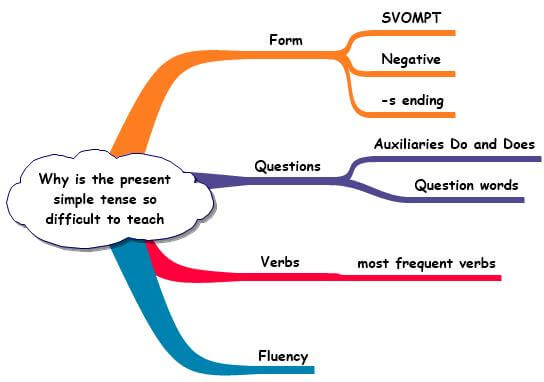
Please, share your ideas in the comments section.
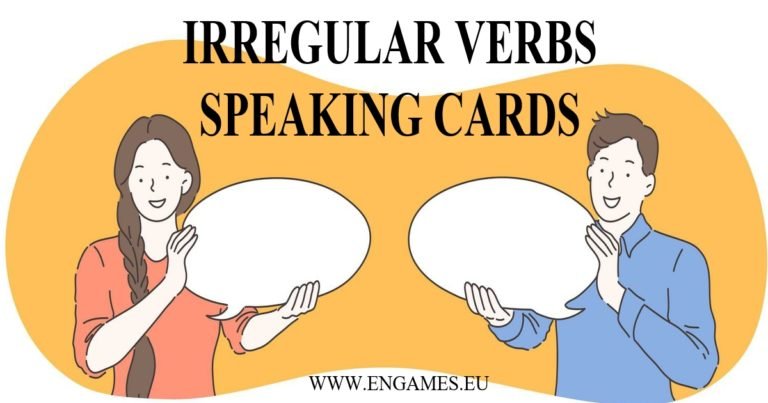
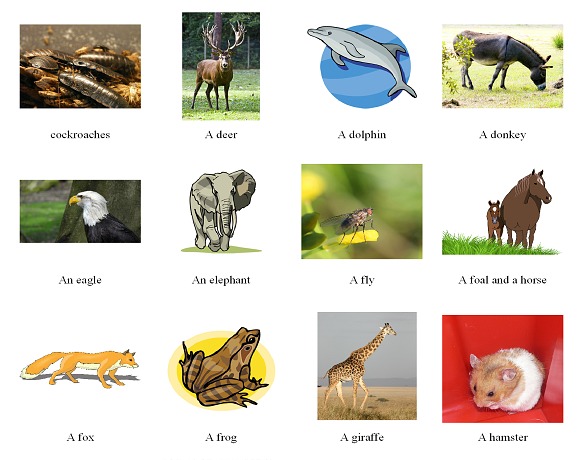

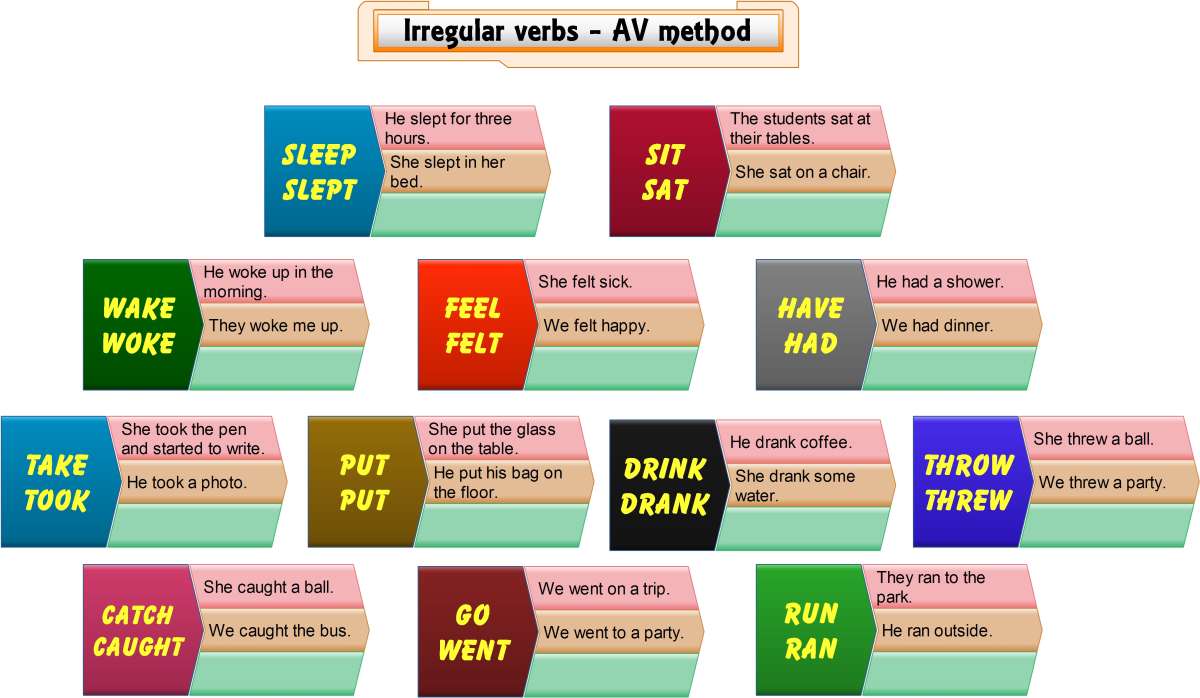
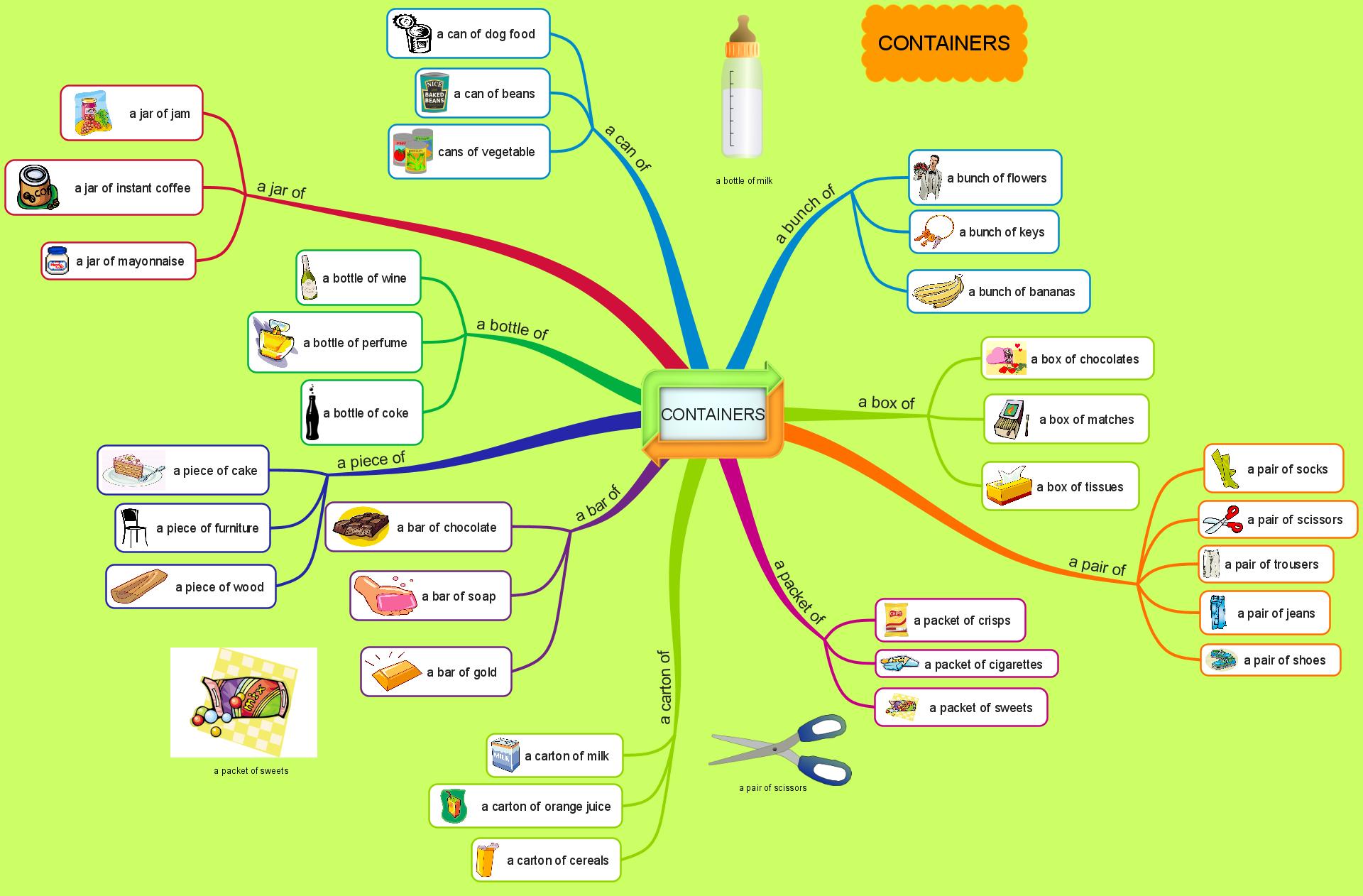
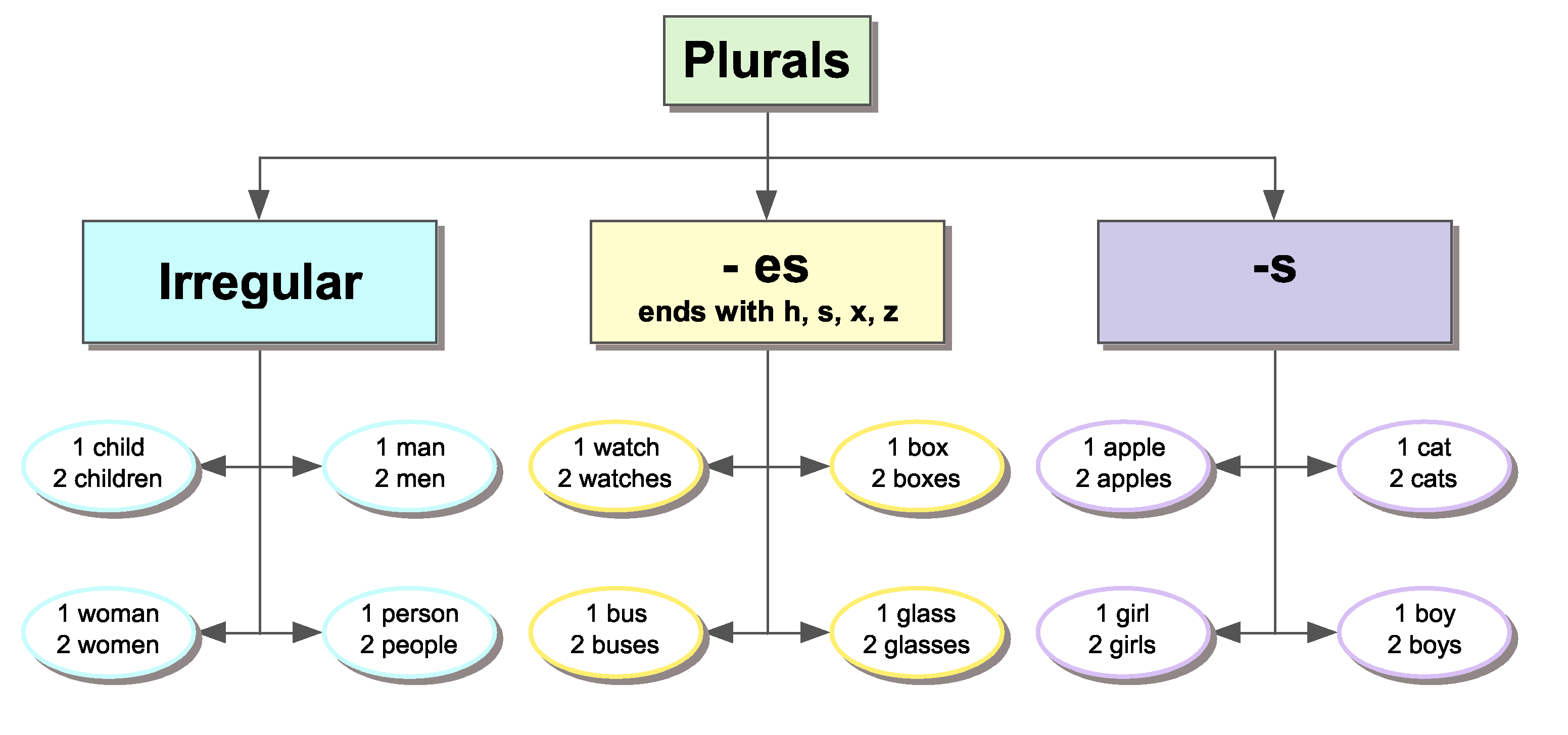
Buena app para entrenar ingles.